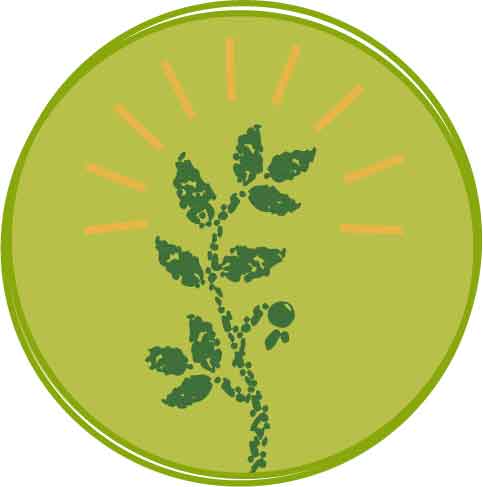By Dr. Noel Ellis, Hon. Professor, School of Biological Sciences, University of Auckland, New Zealand
Pulses have been essential in agriculture over millennia
 Agriculture is the system that underpins human nutrition and provides the livelihoods of 1.3 billion farmers. Invented about 10,000 years ago in multiple places in the world, agriculture has made it possible for populations and cultures around the globe to thrive. Everywhere that agriculture has succeeded, it included a legume crop, usually a pulse crop . The reason for this is simple: people need protein in their diet, plants need available nitrogen to form proteins, and pulse crops add nitrogen to soils in symbiosis with rhizobia.
Agriculture is the system that underpins human nutrition and provides the livelihoods of 1.3 billion farmers. Invented about 10,000 years ago in multiple places in the world, agriculture has made it possible for populations and cultures around the globe to thrive. Everywhere that agriculture has succeeded, it included a legume crop, usually a pulse crop . The reason for this is simple: people need protein in their diet, plants need available nitrogen to form proteins, and pulse crops add nitrogen to soils in symbiosis with rhizobia.
With the invention of the Haber-Bosch process in the 1940s, the advent of synthetic nitrogen fertilizers broke the dependence of agriculture on legumes, but we now realize that nitrogen fertilizers have a high cost in terms of the energy and greenhouse gas emissions needed to produce and use them, as well as creating water and air pollution from excessive use. We need a rethink of our agricultural systems. The good news is that we know how to do this using an intervention that is well understood. We can re-integrate pulses and other legumes into farms and diets since all cultures have farming traditions and cuisines that knows how to use these crops.
Pulses are part of any future scenario of sustainable global agriculture
An estimated 100 billion people have lived on the planet over the course of human history and the world population is now over 7 billion. Demands on agriculture are larger than they have ever been and are rising rapidly; soon we will need to produce on an annual basis the equivalent of circa 10% of all the food ever produced. This is a huge strain and food production systems must therefore become very efficient, especially as access to productive land is challenged by soil degradation and shifting climatic conditions. Pulses and other legumes can contribute to efficiency and resilience in a way that is sustainable. For example, when a severe drought struck Turkey in 2007, an improved chickpea variety survived when most other crops failed.
Agricultural systems can be changed or improved in many ways, but any changes to management practices and social structures rely on the availability of crop varieties that fit the needs of the system as a whole. Developing these varieties is the job of crop breeders, who respond to producers' demands (such as the need for disease resistance) or create varieties that can be used in a novel way. For example, development of new varieties of lablab, a pulse grown in tropical countries, that are 'insensitive' to day length now allows production of multiple crops in a year. To refine their breeding targets and methods, pulse crop breeders can benefit from genetics to provide a strong biological understanding of the pulse species that they are improving. Genetic resources such as germplasm collections, wild relatives, mutants, and diverse cultivars grown in farmers' fields are the foundation for breeding high-yielding, resilient pulse varieties.
Support for pulse productivity enhancement needs to grow
A wide variety of cultivated pulse crops support human nutrition, livestock feed, and soil improvement. Effective breeding and genetic improvement of these crops, that harnesses their tremendous genetic diversity to match specific growing conditions and the needs of households and local and global markets, is a key part of sustainable agriculture. Unlike major cereal crops, which have had massive investment, pulse crops have been weakly funded. As a result, many urgent pulse breeding goals that would increase productivity and profitability, reduce producer risks and environmental impact, and expand uses of pulse crops remain unrealized. In many regions, current levels of breeding research are not sufficient to meet pulse production needs and many national programs commonly lack funding sources.
Pulses and other legumes have been central to agriculture and nutrition throughout much of human history. The tremendous genetic diversity of pulse species and varieties is a valuable asset for farmers worldwide. Breeding and genetic programs are a critical for boosting yields and stress resistance of pulse crops. To match the productivity gains made in cereal crops in recent decades, steady investment in systematic, streamlined pulse breeding programs is urgently needed and can build on existing scientific progress.
As part of the 2016 International Year of Pulses, scientists from around the world have developed a 10-Year Research Strategy for Pulse Crops with support from the Global Pulse Confederation (GPC) and the Canadian International Development Research Centre (IDRC). This report showcases transformative research investments, including breeding and genetics that would allow pulse crops to deliver on their full potential as a critical player in the global food system.
i Diamond (2002) Nature 418: 700-707.
ii Tilman and Clark (2014) Nature 515: 518-522.
iii http://www.kirkhousetrust.org/docs/newsletters/kt_newsletter_004_Jul_2015.pdf
